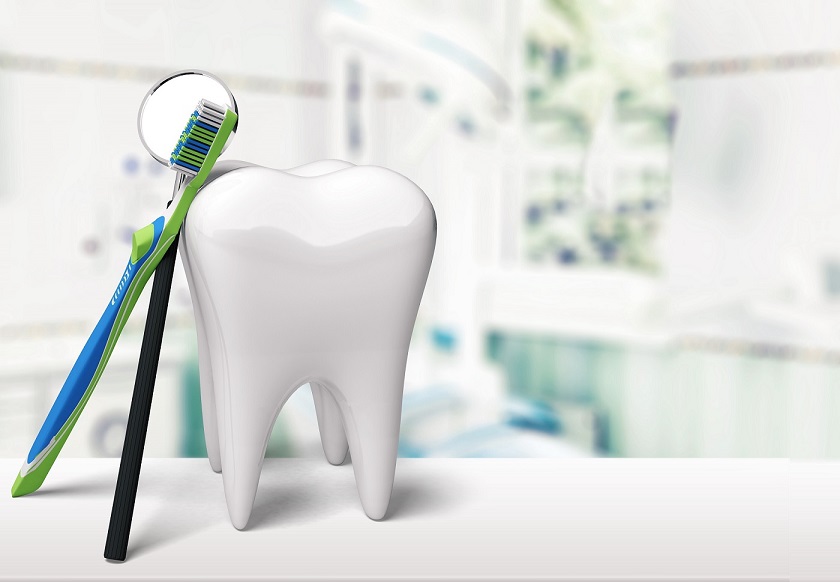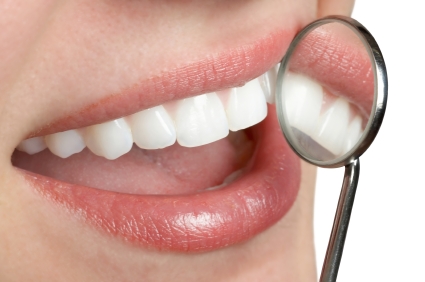Author: admin
Most Recommended Dentist Near Me, Litchfield MN
Your natural teeth should last a lifetime with proper care and maintenance. That is why you need a reliable dentist near me to help provide adequate care for your dental health, treat dental issues, and adjust your overall dental hygiene routine as your needs change. But before choosing a new dentist, it is important that you carry out detailed research. If you need a top rated dentist near me, our dental practice is the ideal place to turn to.
We are a reputable dental practice committed to offering top-class dental services and solutions to both young and adult patients. At our dental practice, we work with a dedicated team with several years of experience in various dental procedures. We offer dental exams, routine cleanings, and other advanced dental procedures at our deluxe dental office.
Preventative Dental Care
We firmly believe in preventive dental practices, such as proper at-home oral hygiene and regular dental visits for professional teeth cleaning. Our dentist can help you with this to reduce the risk of dental problems in the future. Moreover, with regular checkups, we can restore damaged teeth at the earliest stage possible to reduce the discomfort and tooth deterioration associated with untreated dental problems.
Restorative Dental Services
Dental emergencies can arise any time. As such, it’s important to have ready access to a top rated dentist near you to provide the necessary treatment. Our experienced dentist and dental team performs a wide range of dental procedures using state-of-the-art dental equipment, the newest techniques, and advanced technology. Whether it is a minor or major issue with your teeth or gums, our dentists will offer a fast, efficient, and lasting solution.
Cosmetic Dental Services
A bright and healthy smile exudes confidence. This is our responsibility to our patients to create beautiful, healthy, and confident smiles through our restorative and cosmetic dental procedures. Our compassionate cosmetic dental services and procedures will help you achieve the healthy gums and brilliant smile you always wanted.
Contact Us Today!
Call our dental practice today to schedule an appointment with our experienced dentists. We offer affordable, reliable, and highly professional dental services. Our trusted dental team will be happy to meet with you and discuss your available dental options.
Best Value for Dental Implants in Litchfield MN
Dental implants tend to cost a lot more than alternative tooth replacement treatments such as dentures and dental bridgework. This cost can partly be attributed to the requirement of a skilled oral surgeon to perform the procedure, as opposed to a general dentist. As a surgical procedure, it also requires careful planning to eliminate any risks and ensure successful treatment. Moreover, dental implants often require additional procedures such as tooth extraction, bone grafting, sinus augmentation, crown placement, and so on depending on the position of the implant, individual treatment plan, and the patient’s general health. All of these factors add to the final cost of dental implants placement.
Generally, there is a variety in the price range for a single dental implant. This amount is distributed across service costs, cost of all components involved in the procedure, and the cost of the replacement crown.
A costly dental implant procedure may involve the following steps:
- Tooth or teeth removal – to remove any tooth fragments during site preparation.
- Bone grafting – If the implant site has signs of bone loss after tooth extraction, your oral surgeon may recommend bone grafting to build up the bone tissue and achieve a solid base to support the implant. Bone grafting in the upper jaw is known as sinus augmentation or sinus lift
- Titanium Implant placement – A titanium post will be inserted into the jaw bone using a special drill and tools, and a “healing cap” placed over the implant before stitching up the gum.
- A temporary denture will be placed at the site for aesthetic purposes during healing
- Abutment placement – It is connected to the implant using a screw
- Crown fabrication – Impression of the abutment will be obtained and sent to a dental lab to fabricate your custom crown.
- Tooth replacement – When the crown is ready, it will be secured to the abutment by cementing or with a screw.
How Much Will the Insurance Pay?
In the cost breakdown above, dental insurance providers only accept to pay for the replacement crown. This is because dental implants are considered an elective procedure by most dental insurance providers, even though it has become a standard of care for tooth replacement.
For more information on dental implants in Litchfield MN and to find out the cost of your individual treatment, please contact us today.
Types of Dental Crowns, Which To Choose in Litchfield MN
When it comes to choosing dental crowns to repair a damaged tooth, there are several dental materials that you can choose from. However, porcelain-fused-to-metal is arguably the most common material because of its unique combination of mechanical strength and aesthetic results. In addition, it’s said to be of an acceptable biologic quality that is needed for periodontal health.
That said, porcelain-metal blends may not be as readily available because their fabrication requires a high level of workmanship and the use of precious metals which have become increasingly costly. Some patients also dislike the metal framework, which may be visible when you smile depending on the tooth being restored.
As such, your dentist may recommend alternative tooth-colored materials for your custom permanent crown, such as:
- All Porcelain Crowns – Dental crowns that are fabricated entirely from porcelain are referred to as all-porcelain crowns, while those made entirely from ceramic are known as all-ceramic crowns.
- All-Resin Crowns – Dental composite resin crowns are highly affordable, but are arguably the weakest material for crowns since they’re prone to chipping, cracking, and rapid wear.
- Zirconium – Crowns made from this material are as strong and durable as metal crowns and natural-looking for an aesthetic restoration. Zirconia crowns are biocompatible and won’t cause allergic reactions, plus they can be fabricated at the dentist’s office for same-day crown restorations.
Which Crown Should You Choose?
Each dental crown material has various pros and cons that should be carefully evaluated before choosing your permanent crown restoration. You can also choose metal crowns made from gold, platinum, and alloys like nickel-chromium and cobalt-chromium for a stronger and more durable restoration. Your dentist will help you make the right choice based on your specific dental needs.
To learn more about Dental Crowns in Litchfield MN please contact us today.
Dental Crowns Treatment in Litchfield MN
Dental crowns are custom-made tooth restorations that are designed to cap the entire surface of a weakened tooth in order to strengthen it. Dental crowns are permanent. As such, they’re carefully designed using impressions of the damaged tooth to ensure that the size and shape of the crown matches that of the original natural tooth. You can even choose tooth-colored materials for fabrication of your custom crown so it blends in with the surrounding, natural teeth.
The commonly used materials for tooth-colored crowns are porcelain and composite resin. However, you may also choose metal crowns made from gold, silver, or nickel/chromium alloys, or even choose a blend of porcelain and metal to take advantage of the properties of each material. During your visit, your dentist will help you determine the best choice of material depending on:
- The location and function of the tooth
- The visibility of the tooth when smiling
- The position of your gum line and gum tissue
- The shades of surrounding teeth
- Signs of teeth clenching and grinding
The crown that you choose will be placed in a number of steps undertaken within two appointments:
Step 1: Tooth Preparation
On your first visit, the dentist will administer a local anaesthetic to numb your face and prevent you from feeling any pain when preparing your tooth. Tooth preparation involves the removal of any decay and infection on the site, after which the tooth is filed down to maximize the retention of the crown and to ensure a good fit that doesn’t distort your smile.
Step 2: Making an Impression for the Dental Lab
After tooth preparation, a mold or impression of the tooth will be made and sent to the lab to fabricate your permanent custom crown. An impression of the opposing tooth may also be created to ensure a perfect fit with the mouth closed. Impressions are created using putty or paste that is spread over the prepared tooth and then pulled away so it keeps the shape of the tooth involved. The dentist can also note down specific details about the replacement tooth, such as the natural shade and fit, so its unnoticeable when you smile.
Step 3: Fitting a Temporary Crown
To protect the prepared tooth, a temporary or transition crown will be placed on it. This crown is typically made from plastic material (acrylic), and is held in place using a temporary cementing medium to allow easy removal at your next visit. During this period, it’s important to maintain proper oral hygiene at home to prevent reinfection of the tooth or gum tissues, which may affect the overall success of your crown treatment.
Step 4: Fitting the Permanent Crown
On your second scheduled visit, which should be in two to three weeks from the first visit, the dentist will remove the temporary crown and clean off the temporary cement from the prepared tooth. The permanent crown will then be fitted and adjusted for any bite variations. The dentist will check for accuracy and assess the aesthetics. If there are no issues, the crown can be cemented to your tooth.
Caring for Your Dental Crowns
Dental crowns should last a long time with proper care. Please discuss with your dentist about how to care for your teeth to protect the restoration and your other teeth from future damage.
To ask about Dental Crowns in Litchfield MN please contact us today.
3 Types of Dental Cleanings: Which Is Right for Me? Litchfield MN
Your general dentist can provide different types of dental cleanings depending on your unique dental needs. The American Dental Association recommends that you get prophylaxis cleanings at least twice a year. Prophylaxis, which is also referred to as “teeth cleaning”, involves the removal of accumulated plaque from your teeth, which cannot be removed by regular brushing at home.
A good candidate for prophylaxis should have firm, pink gums with no bleeding or gum pockets over 3mm. However, there are various situations that may require you to get a different kind of dental cleaning, such as gum disease, periodontitis, or staying too long between prophylaxis cleanings. Depending on your individual case, your dentist may recommend other types of cleanings such as:
Full Mouth Debridement
If your teeth have heavy plaque and tartar (calculus) build-up, perhaps because you’ve missed a few prophylaxis cleanings, then your dental professional may recommend full mouth debridement using hand tools and a micro-ultrasonic scaler to clean your teeth and restore the health of your mouth. This procedure is typically performed before an oral examination and diagnosis to ensure good visibility of the actual condition of your mouth
Scaling and Root Planing
Commonly referred to as “deep cleaning”, this procedure is recommended for patients who exhibit signs of periodontal disease, such as deeper gum pockets (over 3mm), inflammation and bleeding gums, accumulation of plaque and tartar below the gumline, and/or loss of bone tissue supporting the teeth. This process may require the dental professional to numb the treatment area to avoid sensitivity when scaling and cleaning the roots of your teeth.
Periodontal Maintenance
Periodontal disease is chronic and irreversible. So following initial treatment for periodontal disease through scaling and root planing or periodontal surgery, your dental professional may recommend this specialized cleaning every 8 – 12 weeks as part of your ongoing maintenance to reduce the risk of gum disease recurrence.
Need Dental Cleaning Today?
If you’ve experienced red, tender, bleeding gums, bad breath, or you just want to be proactive about your oral health, then you should contact our office to find out more about your individual dental cleaning in Litchfield MN.
Dental Implants FAQs in Litchfield MN
What happens during dental implant consultation?
During your consultation, the dentist will physically examine the gap in your mouth where you’re planning to get a dental implant placed, and also capture the necessary dental imaging including X-rays, CT scans, and/or panoramic films. These assessments check the quality and quantity of jawbone, and may influence whether you need bone grafting at the site to increase healthy bone tissue to support the implant.
Will I experience any pain during the procedure?
No. during all your surgical procedure appointments, the dental surgeon will administer a local anesthetic to numb the surgical site, as well as any sedatives that you may require to calm your anxiety and make you comfortable.
Is the tooth extraction done separately?
Tooth or teeth removal is usually the first step of your dental implant surgery. Unless you had the tooth/teeth professionally removed, there is a high likelihood that the site of the dental implant will still have some pieces of the damaged tooth present. Any tooth fragments must be completely removed to allow for proper site preparation before placing the dental implant.
Are dental implants safe?
Whenever a surgical procedure is involved, there is always an element of risk and potential complications to the success of the treatment or the patient. But the techniques used in placing dental implants have been polished for many decades. Dental implants are safe, and even considered the standard of care for replacing missing teeth.
How do you ensure a successful dental implant placement?
The 98% success rate of dental implants is attributed to careful planning, which involves making sure that the patient is healthy enough to undergo dental surgery and heal and recover properly. In addition, the dental team reviews all pertinent elements such as infections, allergies, bleeding disorders, existing medical conditions, and medications before proceeding with the treatment. Failed implants are very rare, and may occur in the unlikely event of overloading the implant, fracture of the implant, infection, damage to surrounding tissues, poor bone quality, or poor implant position. But a carefully planned procedure by a qualified dentist can help avoid all of these risks.
For more information on dental implants in Litchfield MN and to find out the cost of your individual treatment, please contact us today.
Do I Need Dental Crowns? Litchfield MN
In dentistry, a crown refers to the surface area of the portion of the tooth above the gum line that is covered by enamel. In the event that this layer gets damaged due to decay, chips, fractures, or deep stains, your dentist may recommend that you get an artificial dental crown to fix the problem.
Crowns can be made from tooth-colored materials such as porcelain and composite resin, metals such as gold, silver, and nickel/chromium alloys, or a fusion of porcelain and metal to combine the benefits of each type of material. Your custom-made crown or cap will be permanently bonded to the damaged tooth in order to restore its natural shape, size, strength, function, and appearance (for tooth-colored crowns).
But Should You Get a Dental Crown?
Dental crowns are used to either restore the function of a damaged tooth, or to improve its appearance. There are other treatments that can be used to address the same issues, so your preference may not necessarily be dental crowns. Moreover, if you’re not in pain from decay or tooth damage, you may not need to seek urgent treatment yet, provided the tooth is still functional.
That said, there are several dental issues that may require treatment with dental crowns, including:
- A chipped, broken, or fractured tooth that is sensitive to hot and cold foods and drinks
- Weakened filling
- Very large cavities
- To strengthen and improve appearance of restored tooth after root canal therapy
- To support bridgework – the artificial tooth is bonded to the adjacent teeth through dental crowns so it stays suspended in the gap
- To replace teeth with dental implants – a crown is connected to the post implanted in the jawbone via an abutment, becoming your replacement tooth
- To correct cosmetic dental issues such as excessively or unevenly worn down, badly shaped or misshapen teeth, severely stained teeth, and widely gapped teeth
- To protect primary teeth (baby teeth) for children at high risk for tooth decay
Learn More About Dental Crowns
Depending on your specific case, your dentist will help you choose the most appropriate material for your custom dental crowns, restoring the function and appearance of your mouth.
To learn more about Dental Crowns in Litchfield MN please contact us today.
Affordable Dental Implants in Litchfield MN
Dental implants have been in use now for several decades since they were invented in 1952. In fact, many dental professionals consider them as the standard of care for tooth replacement. Though their placement involves a surgical procedure, the treatment has become largely affordable so that patients can enjoy the many benefits of dental implants, including:
So, how much will it cost you to get a dental implant?
The cost of one dental implant placement depends on a variety of factors, including the position of the implant site in the mouth, the experience of the oral surgeon performing the procedure, and the location of the dental practise. This amount accounts for the surgery for placing the implant, cost of all components involved in the procedure, and the cost of the replacement crown.
A dental implant placement procedure may involve the following:
- Tooth or teeth removal – This is usually the first step of your dental implant surgery. Any tooth fragments must be completely removed to allow for proper site preparation before placing the dental implant.
- Site preparation – If the implant site has signs of bone loss after tooth extraction, your oral surgeon may recommend bone grafting or sinus augmentation to build up the bone tissue and achieve a solid base to support the implant.
- Implant placement – When the site is ready, a dental implant (titanium post) will be placed into the bone using a special drill and tools. The surgeon will then place a “healing cap” over the implant before stitching up the gum.
- Healing – You will have to wait for 2-6 months for the site to heal and the implant to integrate with the bone tissue. A temporary denture will be placed at the site for aesthetic purposes. You will need follow-up visits for the oral surgeon to track the healing
- Abutment placement – After successful integration of the implant to the bone, an abutment will be connected to the implant using a screw. A general dentist can then take an impression of the abutment and send it to the dental lab to fabricate your custom-made crown.
- Tooth replacement – When the crown is ready, it will be secured to the abutment by cementing or with a screw. Keep in mind that the choice of material for your crown will also affect the cost of your dental implant treatment.
How much will the insurance pay?
In most cases, dental insurance does not cover dental implant placement. This is because most insurance providers consider dental implants as an elective surgical procedure, although they have become widely known as the standard of care for tooth replacement. However, some dental insurance providers cover the cost of getting a custom crown.
For more information on dental implants in Litchfield MN and to find out the cost of your individual treatment, please contact our office.
Dental Cleanings Near Me, Litchfield MN
While many dental procedures can be dreadful, teeth cleanings are easily tolerated by most people because they’re not only simple and painless, but also an important part of maintaining your long-term oral health. Ideally, dental cleanings should be performed every 6-12 months to prevent the buildup of plaque and tartar that can cause oral problems such as bad breath, cavities, gum disease, loose teeth, and so on. But your dentist may recommend shorter intervals if you’re at greater risk due to pregnancy, your lifestyle habits, or your general health.
So what exactly happens during a regular dental cleaning?
1. Tartar and Plaque Removal
The actual teeth cleaning process involves the use of specialized tools, such as scalers to remove plaque and calculus from the surface of individual teeth, between the teeth, and around the gum line. This step may take longer if it has been a long time since your last cleaning.
2. Polishing
When all the plaque and tartar has been removed from your teeth, the hygienist will use a special brush with a soft rubber cup. This not only removes any surface stains, but also makes your tooth surface smooth and shiny to make it harder for plaque to form.
3. Expert Flossing
This step helps to thoroughly clean the area between your teeth to remove any leftover plaque and toothpaste from the previous steps.
4. Rinsing
The dental hygienist uses a mouth rinse with liquid fluoride to remove any debris and clean your mouth.
5. Fluoride Treatment
As the final step, your dental hygienist may apply flavored fluoride by putting it in flexible trays that are then placed over your teeth for 30 seconds. This helps to strengthen your teeth and enhance the protection against plaque and calculus.
Following the cleaning, your mouth may feel fresher and your teeth appear brighter. This is because teeth cleaning helps to prevent and treat gum disease and maintain tooth health, but also enhance the appearance of your smile. To learn more about what to expect from a routine dental cleaning in Litchfield MN, please contact our office today.
Teeth Cleaning & Dental Exams in Litchfield MN
Dental cleaning is a simple, painless, and non-invasive preventive dental procedure that seeks to reduce the risk of dental issues such as cavities, gum disease, and bad breath by removing built-up plaque and tartar. Patients often experience some mild vibrations, cooling mist of liquid, and a bit of pressure during scraping, though this doesn’t cause any discomfort. On the contrary, the feeling can be quite satisfying in knowing that you can keep enjoying your healthy teeth and smile for longer.
Ideally, dental cleanings should be performed every six months, but your dental hygienist may recommend shorter intervals if you’re at greater risk due to pregnancy, your lifestyle habits, or your general health. Moreover, if you have gum disease, your dental hygienist may recommend deep scaling – as opposed to regular dental cleaning – to remove plaque from your tooth roots as well.
Generally, the first step before any dental cleaning is an examination of your mouth. The dental hygienist needs to physically check your teeth, gums, tongue, and the entire mouth for any concerns using a small mirror. If there are no problems, then the procedure for dental cleaning may be as follows:
1. Plaque and Tartar Removal: A scaler is used to remove plaque and calculus from the surface of individual teeth, between the teeth, and around the gum line. This step may take longer if it has been a long time since your last cleaning.
2. Polishing: A high-powered brush with a soft rubber cup and gritty toothpaste helps to gently scrub and polish your teeth. This not only removes any surface stains, but also makes your tooth surface smooth and shiny to make it harder for plaque to form.
3. Expert Flossing: This step helps to thoroughly clean the area between your teeth to remove any leftover plaque and toothpaste from the previous steps.
4. Rinsing: The dental hygienist uses a mouth rinse with liquid fluoride to remove any debris and clean your mouth.
5. Fluoride Treatment: As the final step, your dental hygienist may apply flavored fluoride by putting it in flexible trays that are then placed over your teeth for 30 seconds. This helps to strengthen your teeth and enhance the protection against plaque and calculus.
To learn more about what to expect from a Cleaning and Exam in Litchfield MN procedure, please contact your dental office today.

6 Month Smiles
Six Month Smiles is a short term orthodontic treatment that involves wearing clear braces to straighten and improve tooth alignment. This alternative treatment is a convenient approach to a straighter smile without the time commitment.
Learn more










